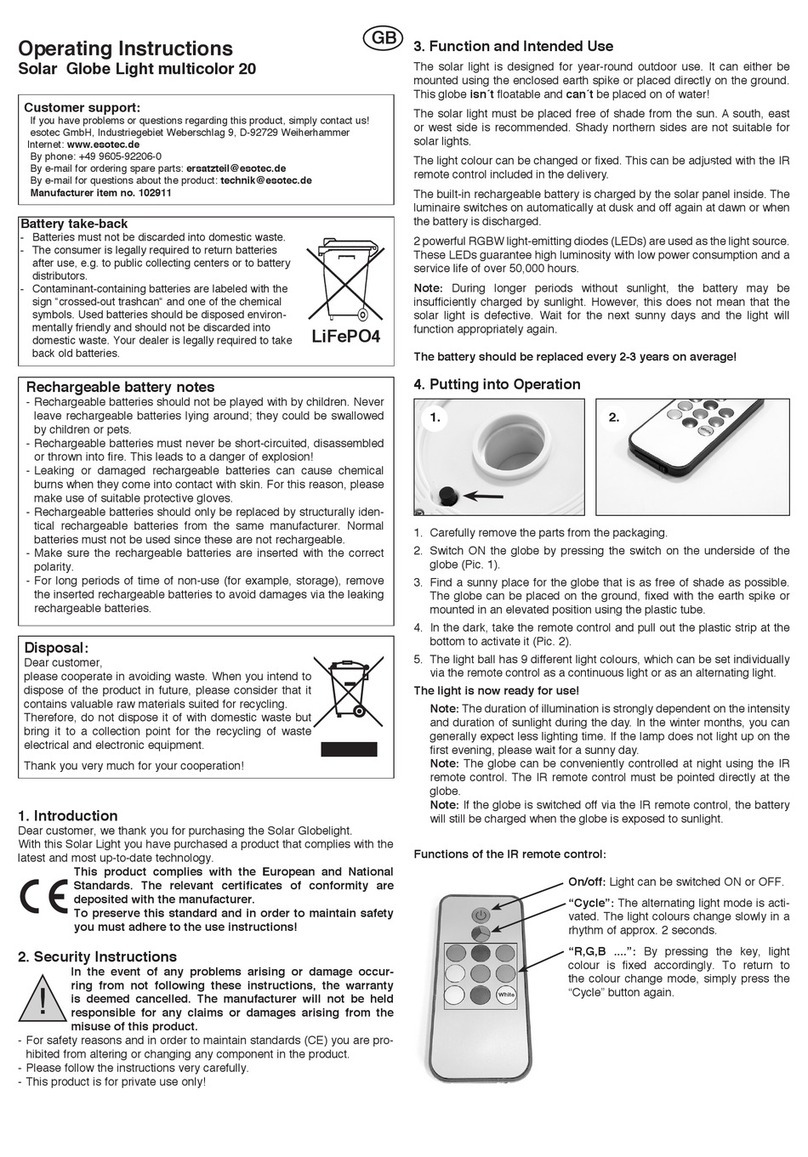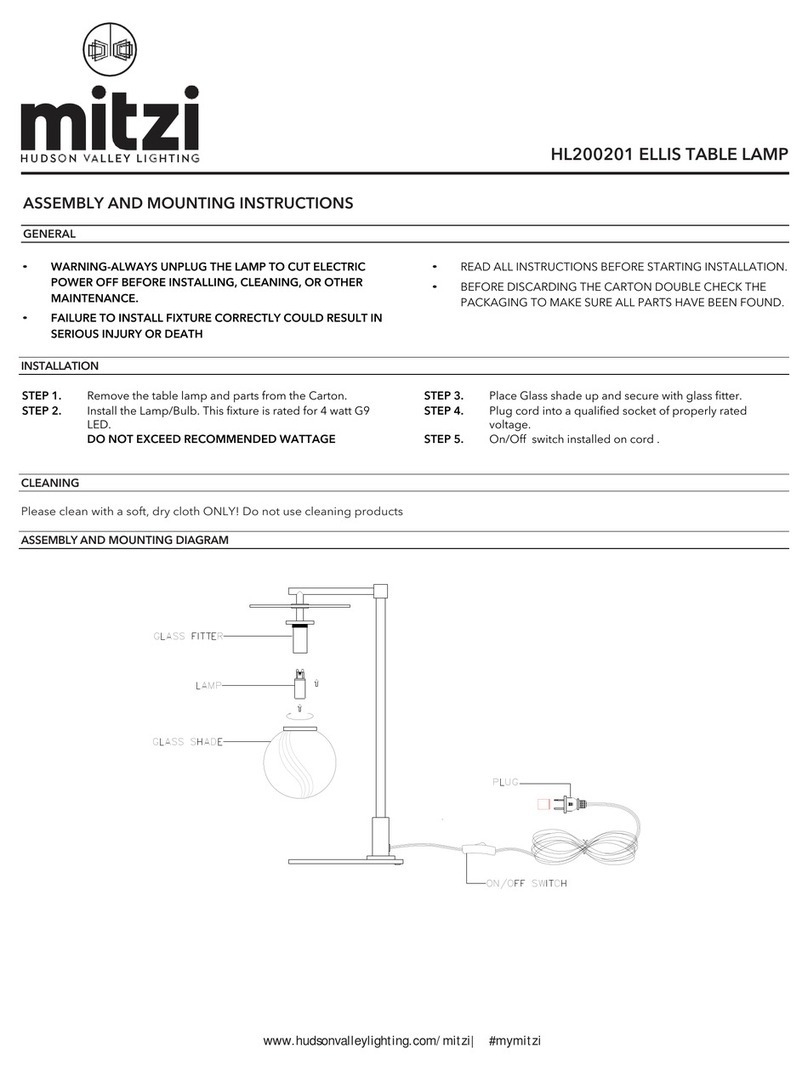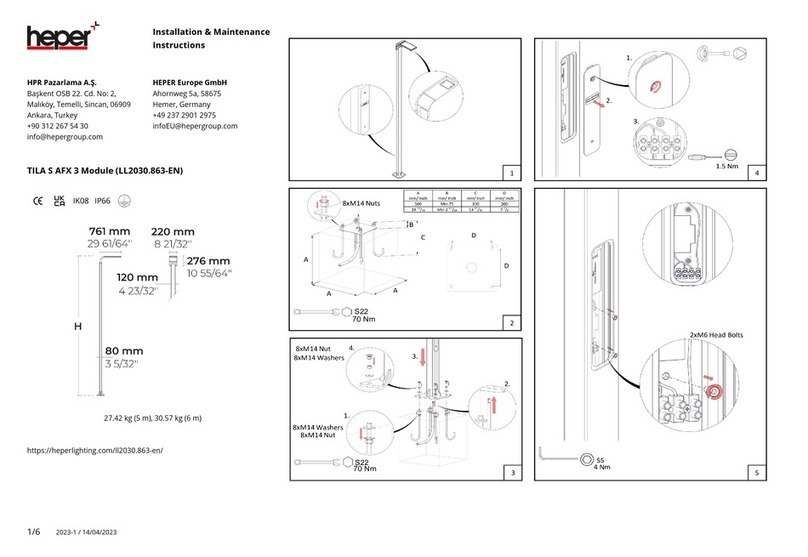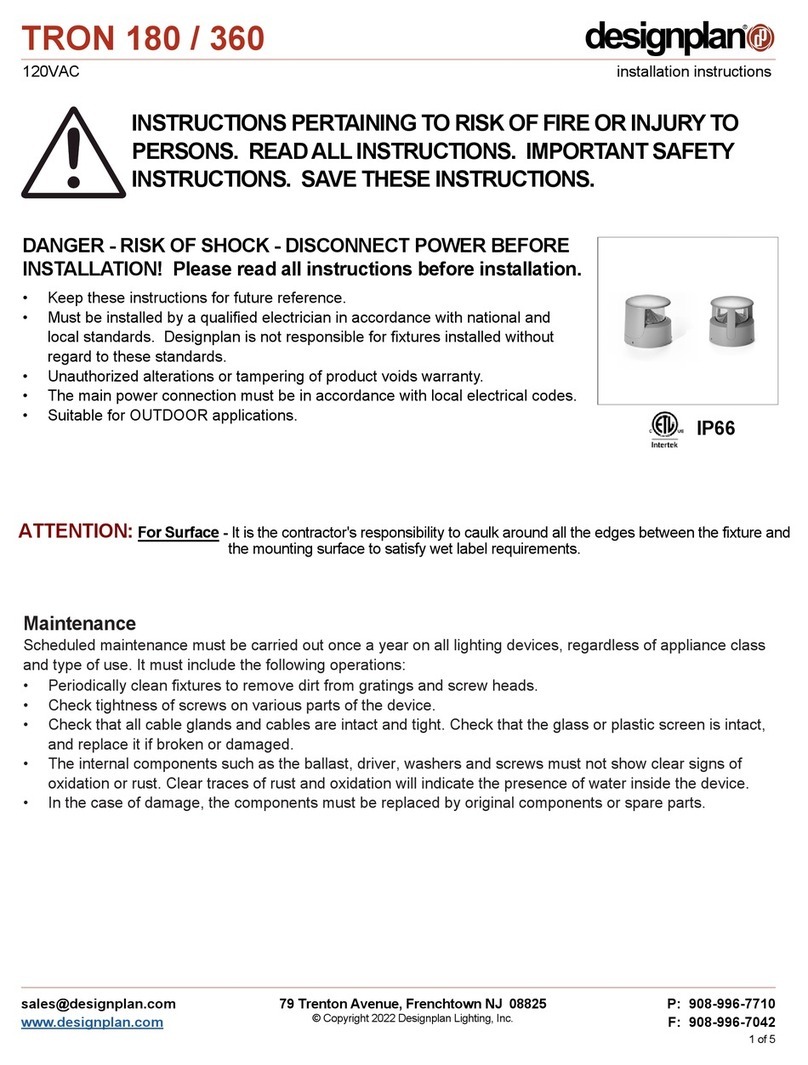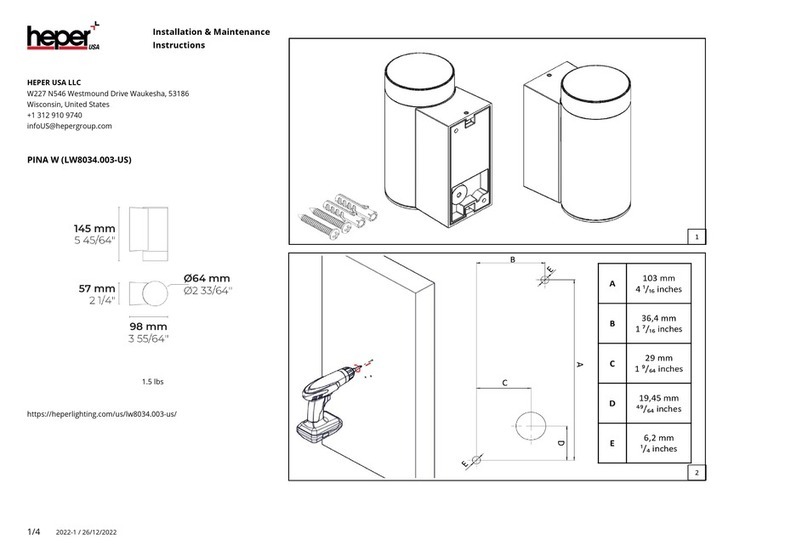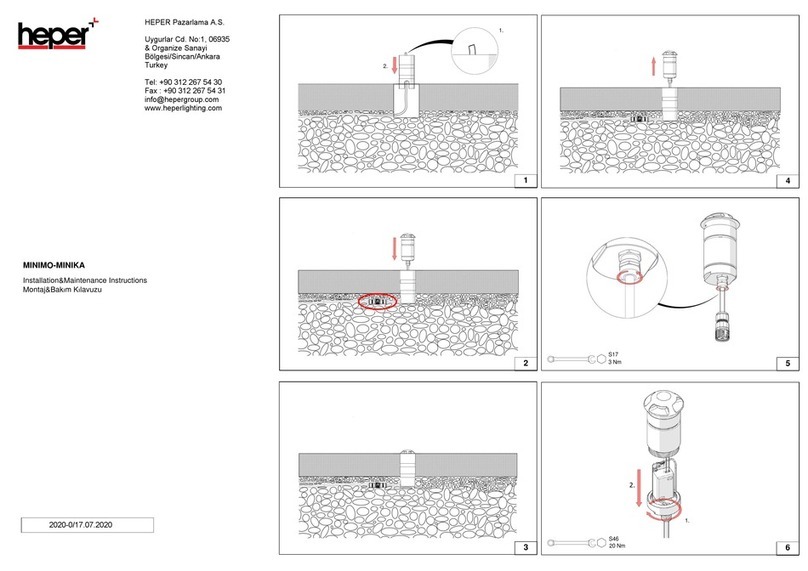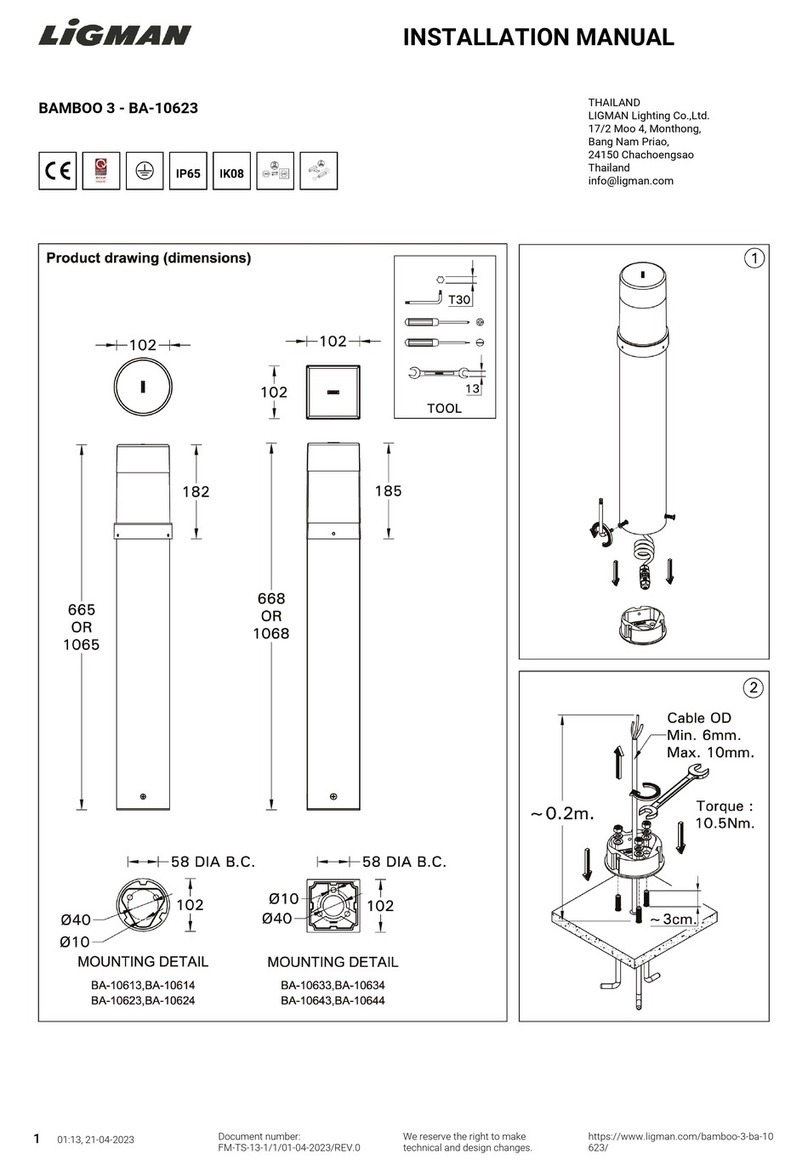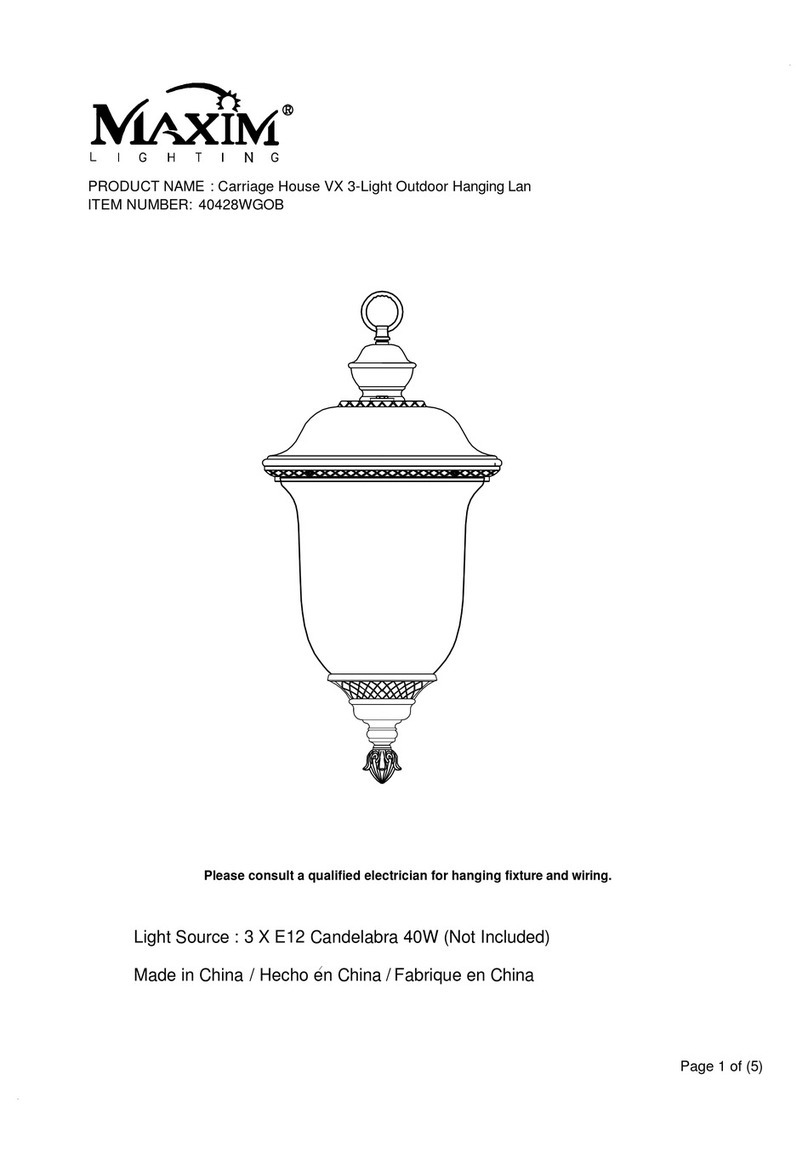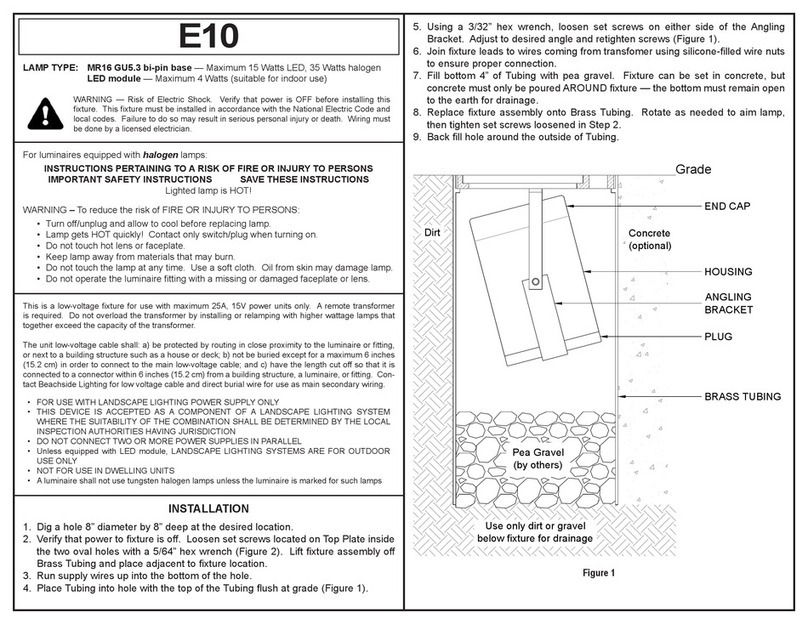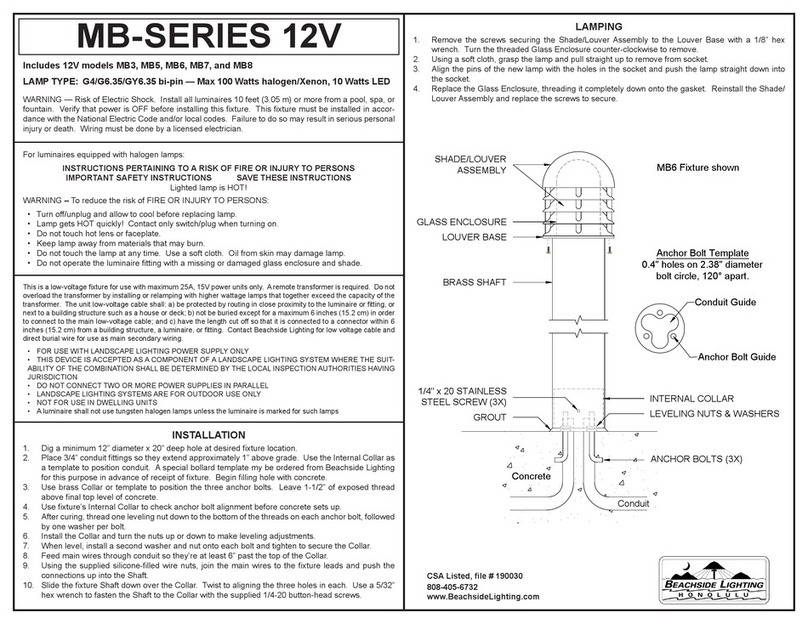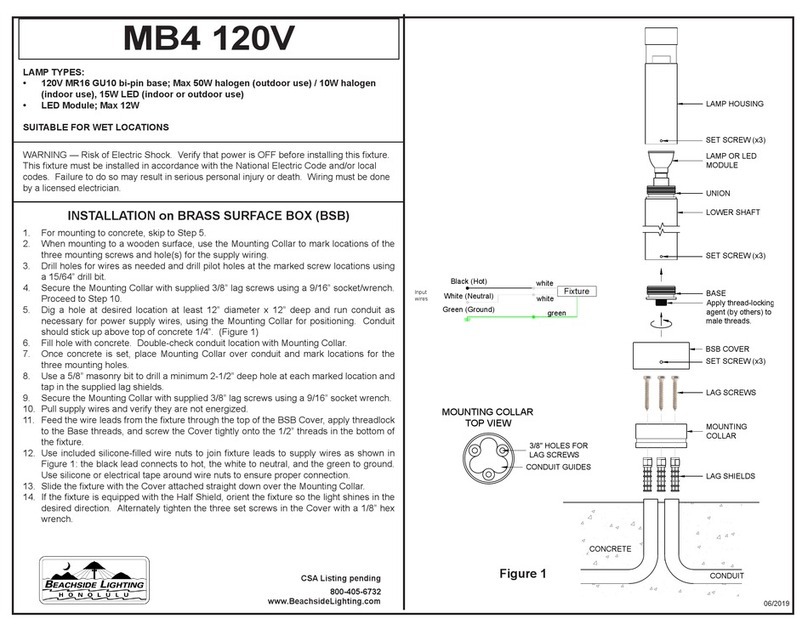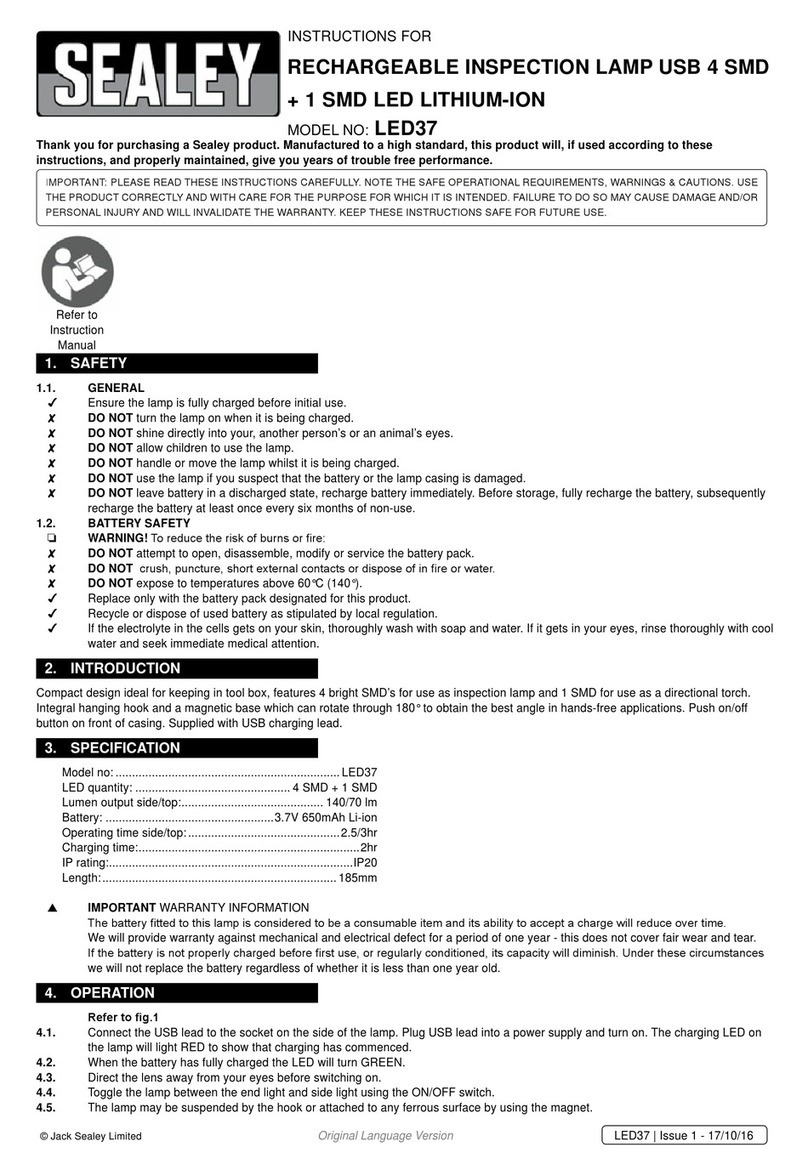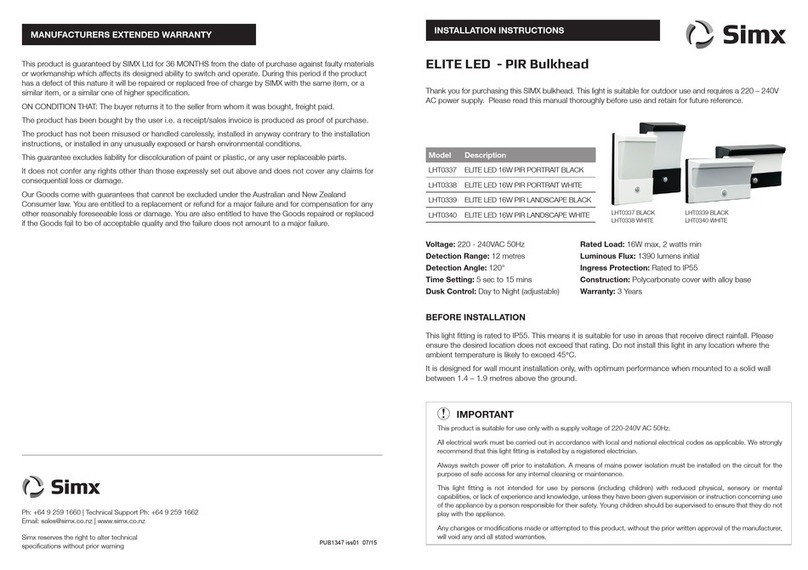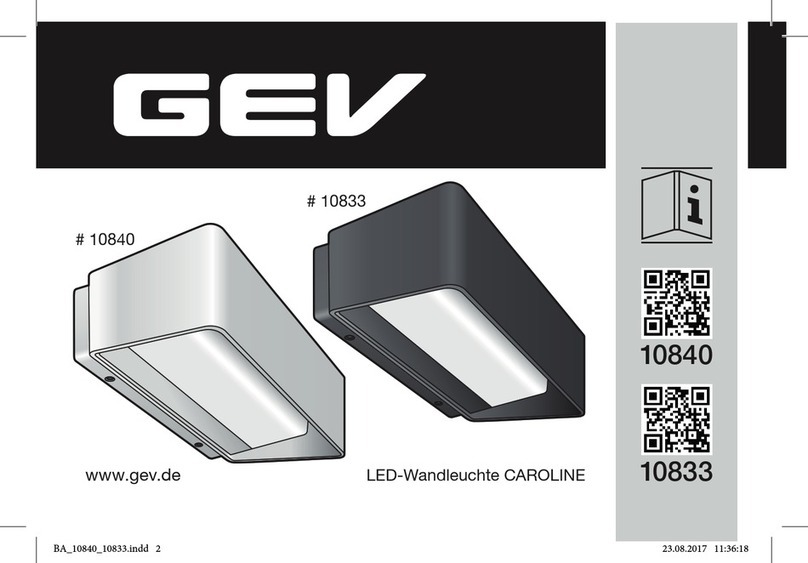
• Keep appliance free and clear of ammable material.
• Brush debris from torch head.
• Clean insects and debris from fresh air inlet openings (propane torches only--see diagram).
• Use damp soapy cloth to clean copper body.
• Do not introduce cleaning compounds near printed instruction label or torch head.
• Inspect burner head and ame (see General Precautions below). If it is evident that the burner head is damaged, it must be replaced
prior to the appliance being put into operation. Contact Beachside Lighting for appropriate replacement parts.
Daily Maintenance
Conversion requires a separate orice and may require inlet holes or plugs. Contact Beachside Lighting for details.
Gas Conversion
• Although agency tested, per ANSI standards, observed satisfactory wind and rain tests, this appliance should be extinguished in the
event of moderate to severe storm conditions.
• Ensure rigidity of the steel conduit/support with another anchored device. DO NOT install this appliance in a location where the public
or heavy objects may lean or bump into the assembly.
• Keep the holes in the base of the torch free from debris and insects (see diagram). These holes are for supplementary air intake and
rain water drainage.
• The torch body can become hot after long operation. Do not touch torch until cooled.
• The ame should appear yellow with some blue at its base. This indicates proper burning.
• If gas supply pressure is between 4-5 in. water column, contact Beachside Lighting for a replacement main gas orice.
General Precautions
Turn on manual gas valve. Allow gas to ow for 2-3 seconds. Use an extended match or lighter to ignite torch by touching screen at top
of torch head.
Lighting and Extinguishing Instructions
For safe and enjoyable use:
• When an appliance is for connection to a xed piping system, the installation must conform with local codes, or in the absence of local
codes with the National Fuel Gas Code, ANSI Z223.1 • NFPA 54; Natural Gas and Propane Installation Code, CSA B149.1; or Propane
Storage and Handling Code, CSA B149.2, as applicable.
• Solid fuels shall not be burned in this appliance.
• Keep the appliance area clear and free from combustible materials, gasoline, and other ammable vapors and liquids.
• The appliance must be isolated from the gas supply piping system by closing its individual manual shutoff valve during any pressure
testing of the gas supply piping system at test pressures equal to or less than ½ psi (3.5 kPa)
• Minimum 4 feet (1.22 meters) to walls and combustible plants, furniture, etc.
• No overhead obstructions, such as roof overhangs, tree limbs, etc.
Safe Operating Clearances
Do not use this appliance if any part has been under water. Immediately call a qualied service technician to inspect the
appliance and to replace any part of the control system and any gas control that has been under water.
• Gas supply cylinder must be constructed and marked in accordance with the U.S. Department of Transportation (D.O.T.) Specications
for LP-Gas Cylinders, or the Standard for Cylinders, Spheres and Tubes for Transportation of Dangerous Goods and Commission,
CAN/CSA-B339, as applicable.
• Gas supply cylinder must be provided with a listed overlling prevention device
• Gas supply cylinder must be provided with a cylinder connection device compatible with the connection for the appliance.
Children and adults should be alerted to the hazards of high surface temperatures and should stay away to avoid
burns or clothing ignition.
Young children should be carefully supervised when they are in the area of the appliance.
Clothing or other ammable materials should not be hung from the appliance or placed on or near the appliance.
Any guard, barrier, or other protective device removed for servicing the appliance shall be replaced prior to oper-
ating the appliance.
Installation and repair should be done by a qualied service person. The appliance should be inspected before
use and at least annually by a qualied service person. More frequent cleaning may be required as necessary. It is
imperative that the control compartment, burners, and circulating air passageways of the appliance are kept clean.
Installation is re hazard tested and approved by CSA for clearances of 4 feet from any side wall and 6 feet to a ceiling above. However,
Beachside Lighting only recommends open-air installations with no overhead obstructions.
Shutdown: Close manual valve to extinguish ame.







